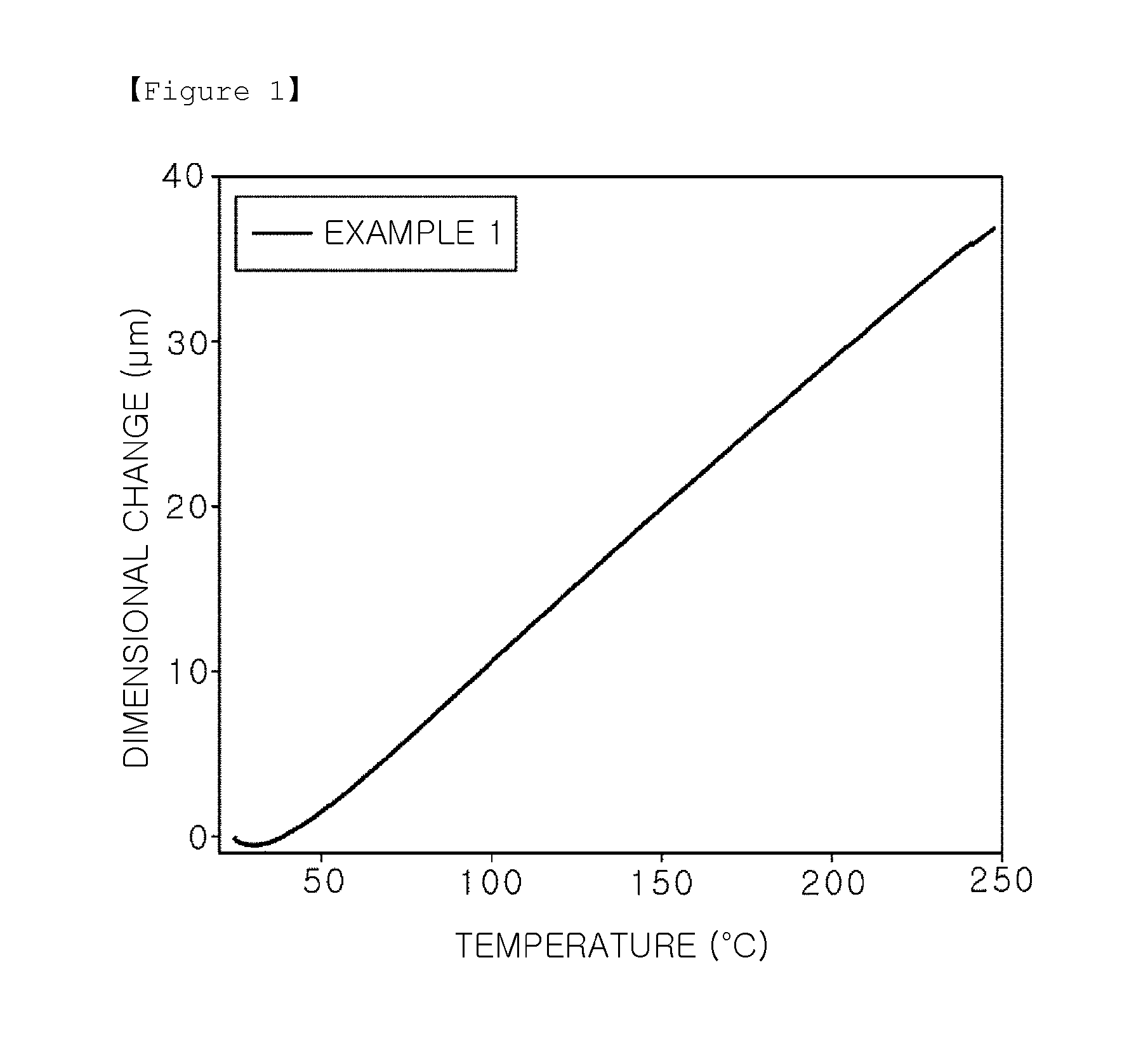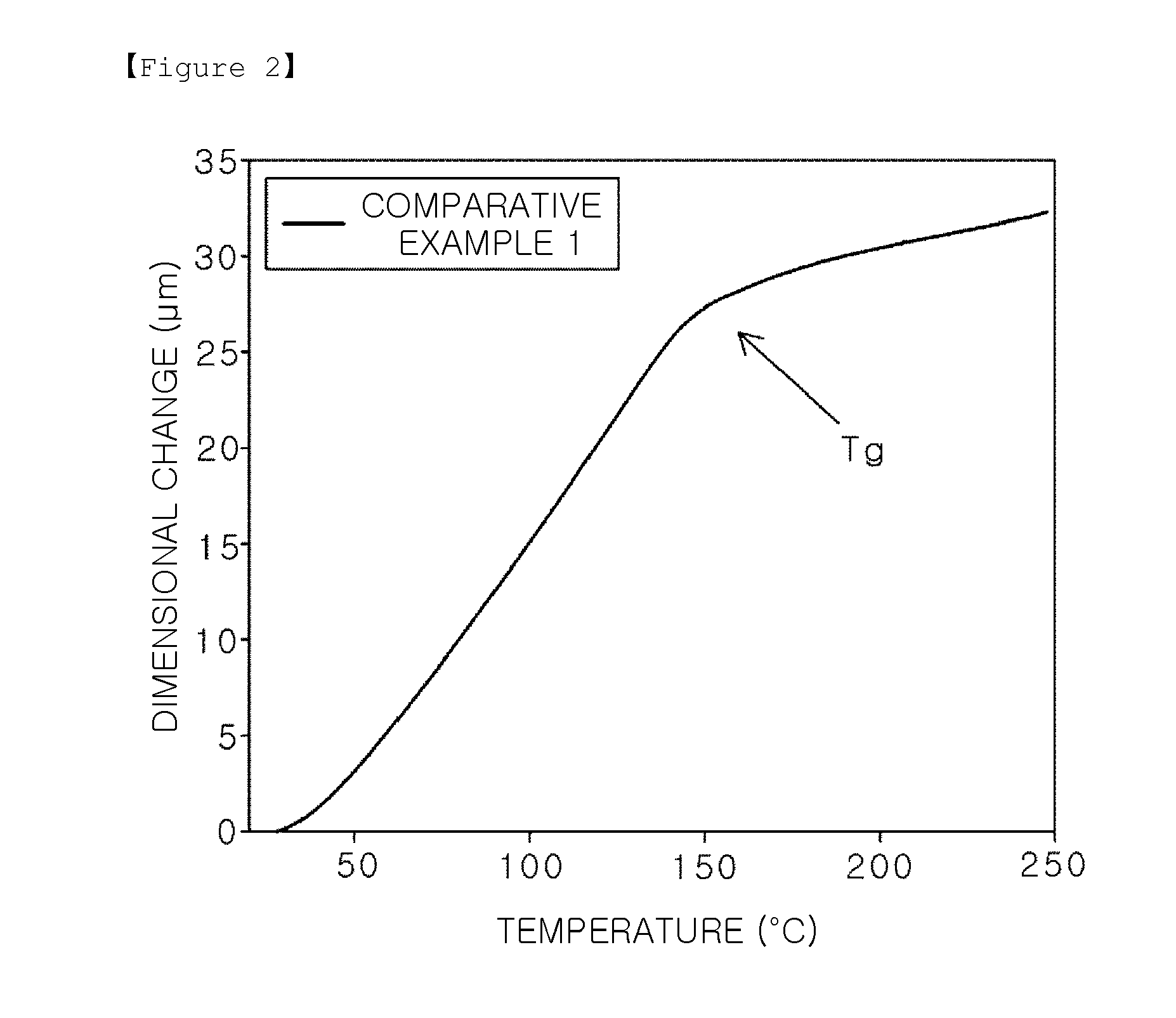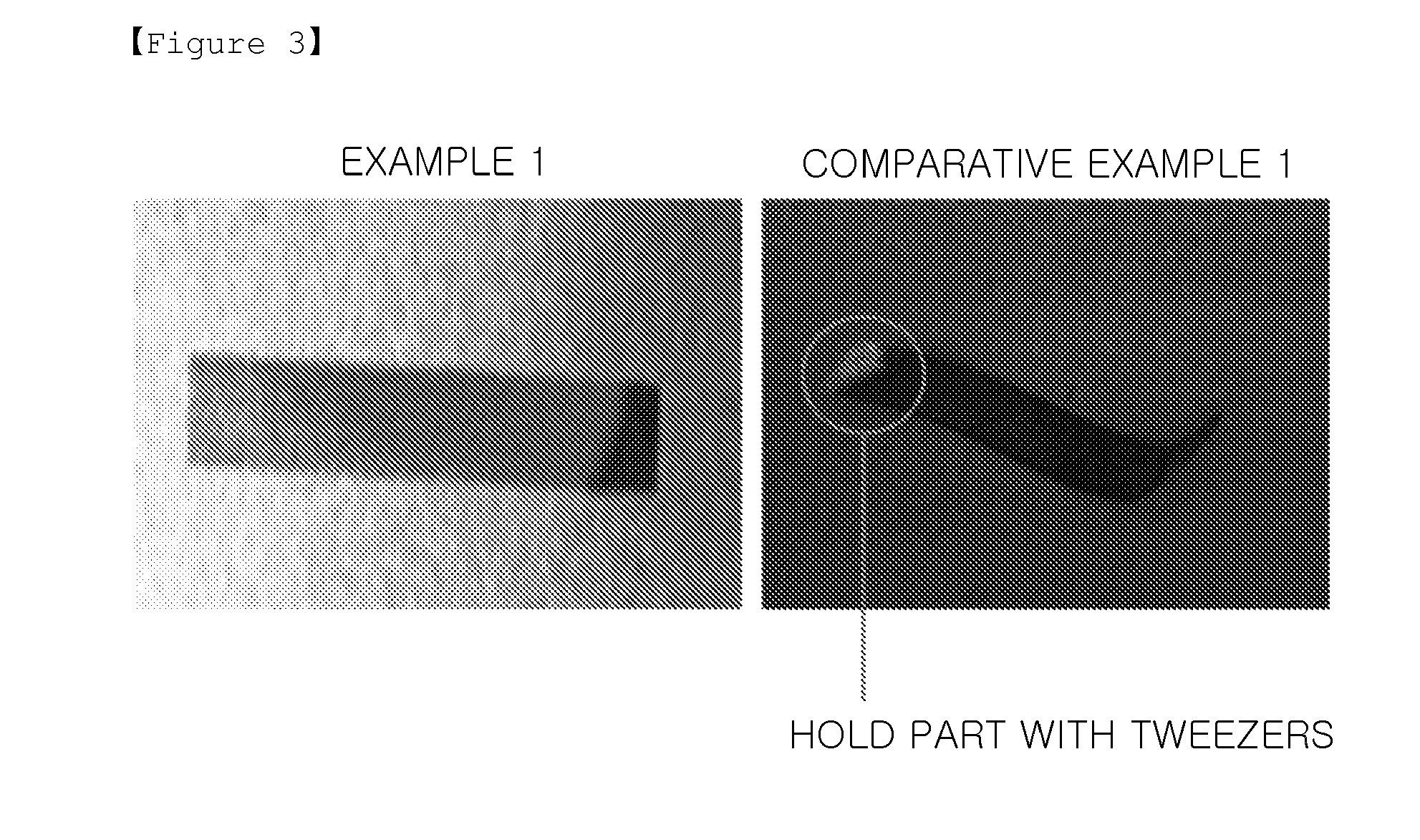Epoxy compound having alkoxysilyl group, composition and hardened material comprising same, use for same, and production method for epoxy compound having alkoxysilyl group
a technology of alkoxysilyl group and epoxy compound, which is applied in the field composition and hardened material comprising same, and production method of epoxy compound having alkoxysilyl group, can solve the problems of product defects, warpage of substrates, and significant limitations in the properties and processability of polymer materials, so as to improve heat resistance properties, reduce cte of epoxy composite, and increase glass transition temperature
- Summary
- Abstract
- Description
- Claims
- Application Information
AI Technical Summary
Benefits of technology
Problems solved by technology
Method used
Image
Examples
synthetic example 1
Step (1)
Allylation of Hydroxyl Group
[0166]3 g of sodium hydride (60 wt %, dispersed in mineral oil) and 200 ml of DMF were added to a 1 L flask, followed by stirring and mixing at room temperature. Then, 38.0 g of an epoxy compound (diglycidyl ether of bisphenol A (DGEBA) (EEW261), Kumho P&B. The same may apply hereinafter.) was added to the flask, and 8 ml of allyl bromide (Sigma Aldrich. The same may apply hereinafter.) was added thereto drop by drop, followed by stirring at room temperature for 20 hours for performing reaction. After completing the reaction, 300 ml of water was added, and the reaction product was extracted with ethyl acetate. Then, the extract was washed with brine, dried with MgSO4, and filtered using a filter, and solvents were removed using an evaporator to obtain an allylated epoxy compound. The reaction scheme is as follows.
[0167]1H NMR (400 MHz, CDCl3): δ1.62 (s, 27H), 2.72-2.74 (m, 2H), 2.87-2.89 (m, 2H), 3.31-3.34 (m, 2H), 3.92 (dd, J=4.8 Hz, 2H), 4.06-4....
synthetic example 2
Step (1)
Allylation of Hydroxyl Group
[0170]3 g of sodium hydride (60 wt %, dispersed in mineral oil) and 200 ml of DMF were added to a 1 L flask, followed by stirring and mixing at room temperature. Then, 35.0 g of an epoxy compound (DGEBA (EEW261)) was added to the flask, and 9 ml of 5-bromopentene was added thereto drop by drop, followed by stirring at room temperature for 24 hours for performing reaction. After completing the reaction, 300 ml of water was added, and the reaction product was extracted with ethyl acetate. Then, the extract was washed with brine, dried with MgSO4, and filtered using a filter, and solvents were removed using an evaporator to obtain an allylated epoxy compound. The reaction scheme is as follows.
[0171]1H NMR (400 MHz, CDCl3): δ1.25 (t, J=3.2, 4H), 1.62 (s, 27H), 1.68-1.74 (m, 2H), 2.08-2.15 (m, 2H), 2.72-2.74 (m, 2H), 2.87-2.89 (m, 2H), 3.31-3.34 (m, 2H), 3.92 (dd, J=4.8 Hz, 2H), 4.06-4.19 (m, 10H), 4.23-4.24 (m, 2H), 5.18 (dd, J=0.8 Hz, 2H), 5.30 (dd, ...
synthetic example 3
Step (1)
Allylation of Hydroxyl Group
[0174]5.3 g of sodium hydride (60 wt %, dispersed in mineral oil) and 300 ml of DMF were added to a 1 L flask, followed by stirring and mixing at room temperature. Then, 40.0 g of an epoxy compound (NET-676) in the following reaction scheme was added to the flask, and 14 ml of allyl bromide was added thereto drop by drop, followed by stirring at room temperature for 24 hours for performing reaction. After completing the reaction, 300 ml of water was added, followed by stirring for 5 minutes, and the reaction product was extracted with ethyl acetate. Then, the extract was washed with brine, dried with MgSO4, and filtered using a filter, and solvents were removed using an evaporator to obtain an allylated epoxy compound. The reaction scheme is as follows.
[0175]1H NMR (400 MHz, CDCl3): δ2.79-2.85 (m, 2H), 2.93-2.97 (m, 2H), 3.39-3.47 (m, 2H), 4.11-4.14 (m, 2H), 4.24-4.40 (m, 16H), 5.30-5.40 (m, 4H), 5.96-6.05 (m, 2H), 7.03-7.10 (m, 5H), 7.13-7.19 (m,...
PUM
| Property | Measurement | Unit |
|---|---|---|
| glass transition temperature | aaaaa | aaaaa |
| temperature | aaaaa | aaaaa |
| temperature | aaaaa | aaaaa |
Abstract
Description
Claims
Application Information
 Login to View More
Login to View More - R&D
- Intellectual Property
- Life Sciences
- Materials
- Tech Scout
- Unparalleled Data Quality
- Higher Quality Content
- 60% Fewer Hallucinations
Browse by: Latest US Patents, China's latest patents, Technical Efficacy Thesaurus, Application Domain, Technology Topic, Popular Technical Reports.
© 2025 PatSnap. All rights reserved.Legal|Privacy policy|Modern Slavery Act Transparency Statement|Sitemap|About US| Contact US: help@patsnap.com



